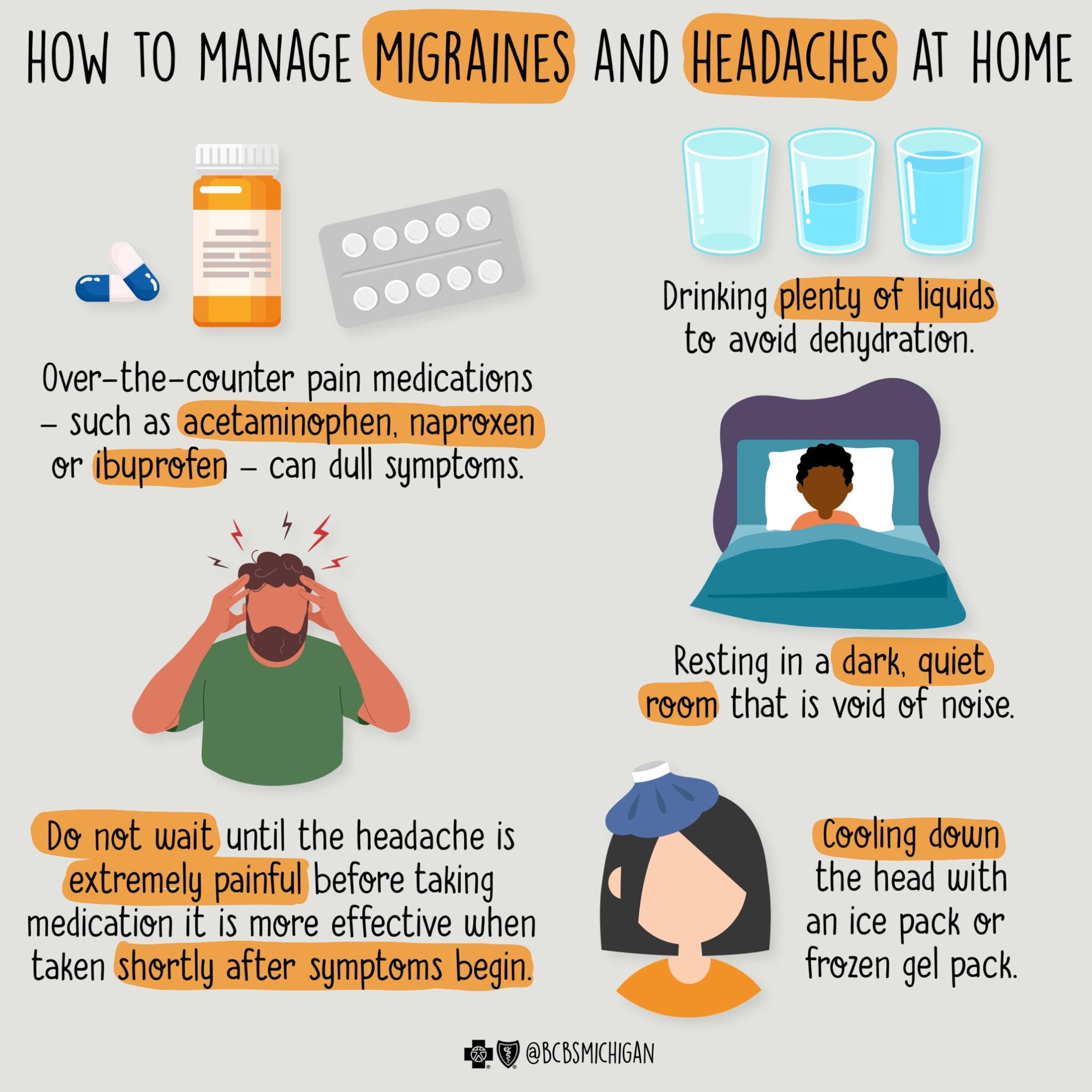Migraines vs. Headaches: Know the Difference

James Grant, M.D.
| 4 min read
James D. Grant, M.D., is executive vice president and chief medical officer at Blue Cross Blue Shield of Michigan. Dr. Grant is a native Michiganian and graduate of Wayne State University School of Medicine. He completed his post graduate training at Northwestern University Medical Center in Chicago. He is a diplomate of the American Board of Anesthesiology, completed his recertification in 2008 and is an associate examiner for the Board.

Close to 40 million Americans knowingly suffer from migraines, making them one of the most common illnesses in the world. That figure could be even higher, as it is believed that many who struggle with migraines are not diagnosed or properly treated.
Common types of headaches
Migraines are one of the most common types of headaches and often are quite severe; however, there are several types of headaches to be aware of.
Cluster headaches
This is the most severe type of headache. The most common symptom of cluster headaches is intense pain concentrated behind or near the eye. These headaches happen in groups, with continuous pain lasting up to three hours long and clusters lasting for several weeks or months.
Sinus headaches
These result when sinuses are inflamed and possibly infected. Common symptoms include runny nose, possible fever and constant pain in the cheekbones, forehead or nose.
Tension headaches
These cause mild to moderate pain and have no other notable symptoms.
Migraine symptoms and phases
Migraines are a type of intense headache than can cause severe throbbing pain or a pulsing sensation, usually to one side of the head. The primary difference between a standard headache and a migraine headache is the debilitating symptoms that often accompany migraines, such as:
- Extreme sensitivity to light and sound
- Fatigue
- Nausea
- Visual disturbances known as auras
- Vomiting
Migraines can be complicated, as symptoms tend to evolve over the course of hours or even days. Factors like family history, allergies, gender and hormonal shifts can cause varying degrees of migraine intensity. Migraine episodes tend to move through chronological phases.
Prodromal phase
This phase occurs before the migraine hits, and features symptoms like mood swings, thirst and hunger, drowsiness and a frequent need to urinate.
Aura phase
Auras either surface before the migraine or they align with the migraine’s arrival. Auras can affect a person’s vision, touch, or speech, though not everyone who suffers from migraines experience auras.
“Attack” phase
When the migraine comes, so does the pain. The “attack” portion of the migraine can last anywhere from a couple of hours to multiple days. This is when symptoms like sensitivity to light, nausea and vomiting can occur. It is best to rest quietly during this phase, as a person’s normal activities can become challenging with an active migraine.
Postdrome phase
After pain has subsided, people may feel tired, sluggish and confused. Though the recovery starts during this “hangover” phase, it could take a person several days to feel themselves again.

How to manage migraines and headaches at home
Over-the-counter pain medications – such as acetaminophen, naproxen, or ibuprofen – can dull headache and migraine symptoms. A person should not wait until the headache is extremely painful before taking medication, as it’s more effective when taken shortly after symptoms begin. Other measures to take to dull the pain include:
- Cooling down the head with an ice pack or frozen gel pack
- Drinking plenty of liquids to avoid dehydration
- Resting in a dark, quiet room that is void of noise
Preventive measures include exercising to prevent future episodes and incorporating more magnesium and vitamin B2 into one’s diet.
When to see a doctor
Since some severe migraine symptoms occur in serious conditions like seizures, meningitis, or strokes, seek immediate medical attention if the following symptoms surface:
- Agonizing headache unlike anything ever felt before
- Blurry vision or double vision
- Difficulty speaking or slurred speech
- Drooping eyelid
- Headaches that surface after a head injury
- Inability to stand or sudden loss of balance
- Numbness or weakness in the face or extremities, in one or both arms, or on one side of the face
- Sudden or severe vomiting
- Tremors or clumsiness
Individuals with a headache history who experience new symptoms, or symptoms that have never been evaluated by a doctor, should also seek immediate medical attention.
James D. Grant, M.D., is chief medical officer at Blue Cross Blue Shield of Michigan.
More from MIBluesPerspectives:
- Back-to-School Already? Here’s a Health Checklist for the 2022-2023 School Year
- Men’s Health at Every Age
- What a Colonoscopy is Really Like, with Dr. James Grant
Photo credit: Getty Images





